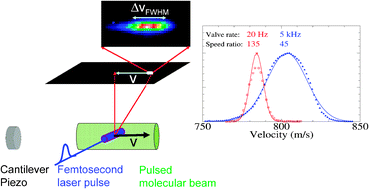In situ characterization of a cold and short pulsed molecular beam by femtosecond ion imaging
Abstract
In this paper we report on the in situ characterization of the cold velocity distribution of a pulsed molecular beam produced by a novel cantilever piezo valve. The velocity distribution is measured at various temporal positions within the pulsed expansion using femtosecond velocity map ion imaging. It is shown that the universal detection of molecules by multi-


 Please wait while we load your content...
Please wait while we load your content...